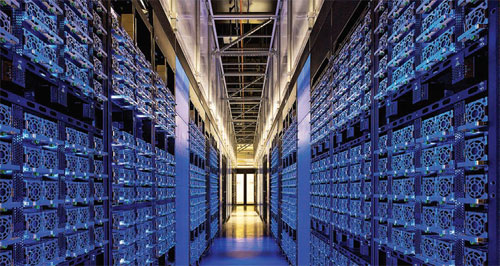By Brice Wallace
Strong and getting stronger.
That describes technology’s impact on the Utah economy, based on figures and analysis in a recent report compiled by the University of Utah’s Kem C. Gardner Policy Institute.
The state-funded report indicates that in 2018, tech’s total economic effect accounted for more than 310,500 jobs at companies that paid $20.4 billion in earnings and generated $29.7 billion in GDP.
“Utah’s tech economy features a fascinating past, impressive present and promising future,” the report states.{mprestriction ids="1,3"}
Utah tech companies that year employed 118,600 people. When added to jobs the tech industry generated in other industries, the impact of 310,500 jobs equated to 15 percent of Utah employment, or one in seven jobs in the state. The state’s tech industry accounted for 6.4 percent of the state’s total workforce — fifth-highest in the nation and above the 4.4 percent nationwide average. Between 2008 and 2018, Utah’s tech industry saw 4.9 percent job growth per year, third-highest in the U.S.
“For the past 15 years, the tech industry has been a reliable job creator for Utah, even during the economic downturn from 2007 to 2009,” the report said. “The volatility and retrenchment the industry experienced in the first few years of the century have not recurred.”
The Gardner Institute in February released preliminary results of the study and the new report updates figures for 2018 and other information. The Tech Industry Advisory Council — with participation from industry trade associations Silicon Slopes, Utah Technology Council and Women Tech Council — and the Governor’s Office of Economic Development and Economic Development Corporation of Utah contributed to the research by providing data, sharing expertise and reviewing results.
The report is available at https://gardner.utah.edu/wp-content/uploads/2019TechReportVol1.pdf.
The study, hailed as the first of its kind, indicated that tech economy activity in 2018 generated over $2.5 billion in tax revenue to help fund schools and other government services. That total included $1.7 billion in state taxes and $800 million in local taxes.
Employment in technology jobs equated to 4.7 percent of all Utah jobs, outpacing the national figure of 5 percent.
“Tech companies employ a larger share of the workforce in Utah than nationwide,” the report states. “The industry’s generous pay, compared with other industries, attracts workers. Even with Utah’s strong wage growth in recent years, tech companies find labor costs in Utah well below the national average. Job growth in Utah’s tech industry has been remarkable compared with other industries and states.”
The annual job growth rate in Utah tech is 4.9 percent, ahead of the national figure of 1.4 percent. That compares with 1.9 percent for other industries in Utah and 0.9 percent for other industries in the nation.
“In terms of total employment and wages in the private sector, no state with an economy of Utah’s size had a larger tech industry in 2018,” said Levi Pace, senior research economist at the Gardner Institute and lead author of the report. “While we focus on jobs and earnings of the tech industry itself, our research also explores the workforce in tech occupations, regardless of industry. This comprehensive approach results in a first-of-its-kind and landmark report on Utah’s tech economy that will help industry leaders and policy makers make informed decisions.”
Other components of the study show that:
• The tech-related job total includes 118,600 Utah jobs in the tech industry; 50,100 jobs at technology-related firms that overlapped with aerospace, defense, life sciences and other industries; and 43,800 jobs in tech occupations at non-tech companies.
• Tech jobs in Utah paid an average of $106,100 in 2018, over 80 percent higher than the $58,500-per-job compensation in other industries.
• Eighty percent of Utah’s tech industry jobs and wages are in Salt Lake and Utah counties. Utah County led the state in technology jobs, employing 10.2 percent, and ranked second among counties for its employment level with more than 25,300 jobs in the industry.
“We live in a time of dramatic technological change that impacts all facets of our lives,” said Natalie Gochnour, director of the Gardner Institute. “Utah’s tech sector stands at the forefront of this change not only providing jobs and income for Utah families, but bringing innovative products and services to a global economy and making Utah a center of innovation.”
“As Utah’s economy continues to soar, so does our technology industry,” said Val Hale, executive director of the Utah Governor’s Office of Economic Development. “The Utah Tech Economy report will be a great resource and help companies looking at Utah better understand our information technology industry. We look forward to the future impact technology will have on Utah and its economy.”{/mprestriction}








